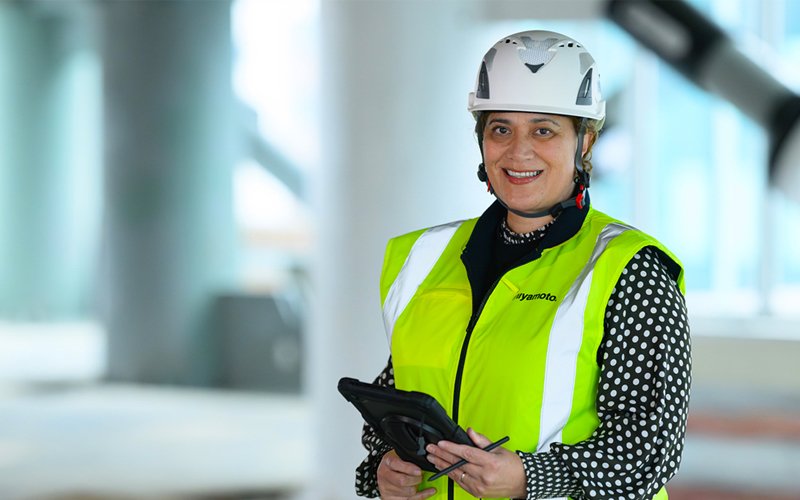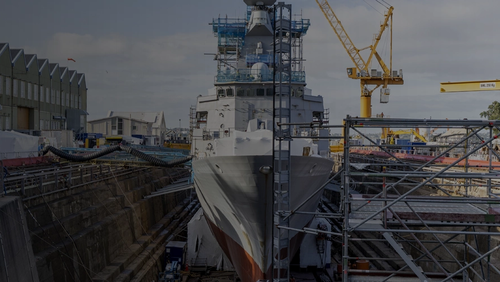17 Jul 2025
When new Fellow Chantelle Bailey looks back on her journey to date, what is most critical to her is that she has done right by her tīpuna (ancestors) and future moko (grandchildren).
Associate Structural Engineer at Miyamoto New Zealand, Chantelle Bailey FEngNZ CPEng IntPE(NZ) (Te Rarawa, Ngāpuhi, Ngāti Hāmoa, Lotofaga and Le’auva’a) has had a successful career merging her technical acumen with her cultural philosophy in a range of engineering and governance positions. She’s recently become a Fellow of Engineering New Zealand, recognising her multifaceted contribution to the profession, including as a Practice Area Assessor and member of the Competency Assessment Board.
“Receiving recognition at this prestigious technical and professional level is a privilege. I want to be a positive role model to my daughters. Being a Fellow is a nod to my whānau and community who supported me to persevere.”
The proverb “O le ala i le pule, o le tautua” – the pathway to leadership is through service, resonates with Chantelle, who attributes much of her success to her whānau and her community.
“My formative years were steeped in family and sports, instilling in me strong community values and a sense of service, and they were instrumental in shaping my leadership qualities and guiding my professional journey.”
After high school, Chantelle trained as an aircraft technician in the Royal New Zealand Airforce (RNZAF). She says that technically, transitioning from the RNZAF to professional engineering was smooth. “I already had the foundation of technical aptitude, a knowledge of business acumen, and I was an unconventional thinker.”
She says her relationship with the New Zealand Defence Force and her involvement with the Engineering New Zealand Foundation and its wellbeing initiative gave her valuable insights into Te Whare Tapa Whā, a wellbeing model created by health advocate Sir Mason Durie.
“It represents taha wairua (spiritual balance), taha hinengaro, (mental and emotional), taha tinana, (physical) and taha whānau (family and social). Our connection with the whenua (land) and people forms the foundation.”
We talk about a culturally safe environment, and the numbers are increasing, but the reality is that it shouldn’t be this hard.
Chantelle says engineering projects are also enhanced with Te Whare Tapa Whā.
“If you and your team don’t have balance, then in high pressure situations and unforgiving environments, things like burnout and mistakes with poor decisions, can be detrimental.”
She says if project delivery takes on the same ethos as Te Whare Tapa Whā, we can have robust, resilient infrastructure that supports both sustainable communities and Te Taiao (the natural world and environment).
Chantelle’s philosophy and technical expertise have served her well. In 2016 she was awarded Engineering New Zealand’s Fulton-Downer Silver Medal for outstanding service in engineering.
She embarked on her governance career when an RNZAF mentor encouraged her to join Engineering New Zealand’s Manawatū Branch Committee. Since then, a range of past and present board positions have included a focus on bringing about positive change for Māori, Pacific people and wāhine.
Chantelle explains that being a voice for those who are not usually represented at the board table can be uncomfortable at first. However, she finds it to be very rewarding, noting that every board, panel and committee she has been on has been professional and supportive. She believes governance is a natural extension of kaitiakitanga (stewardship), an intrinsic principle of Te Ao Māori, and that Māori engineers, and engineers in general, should put their hands up for governance roles.
Chantelle hopes her work will help to pave the way for the next generation of engineers.

Photo: Mark Tantrum Photography
“I want to send the elevator back down, to encourage inclusion in the engineering profession. Visibility and normalising this process are important to reap the benefits of diversity, be that gender, experience or whakapapa.”
She says there is still a lot of work to be done in improving diversity and inclusion within the engineering profession.
“We talk about a culturally safe environment, and the numbers are increasing, but the reality is that it shouldn’t be this hard.”
She says being the only Māori or Pacific person or the only wāhine in a room can be exhausting.
“Justifying and explaining one’s culture can take a toll, and this in itself creates barriers and limits a person’s opportunity to succeed.”
“We refer to this as the ‘cultural tax’ on one’s career – the burden to enhance an organisation’s cultural capability, often at the expense of years at university and falling behind their peers in technical experience and opportunities. This is not just a concept, but a real and significant challenge, where organisations want to appear as though they value diversity, but obtaining diversity of thought is still a long way off.”
To succeed, she says, we need an inclusive environment without prejudice.
“Executives should encourage senior leaders to embrace open-mindedness and actively support under-represented individuals in engineering,” she says.
“This approach will result in a genuine, holistic, positive impact on the engineering profession.”
Chantelle says that to solve today’s problems, we urgently need diverse engineers to drive long-term strategies and vision.
“It’s crucial that we understand the impacts of our decisions on our mokopuna's mokopuna (intergenerational) and Te Taiao, and diverse perspectives are key to achieving that.”
This article was first published in the June 2025 issue of EG magazine.






